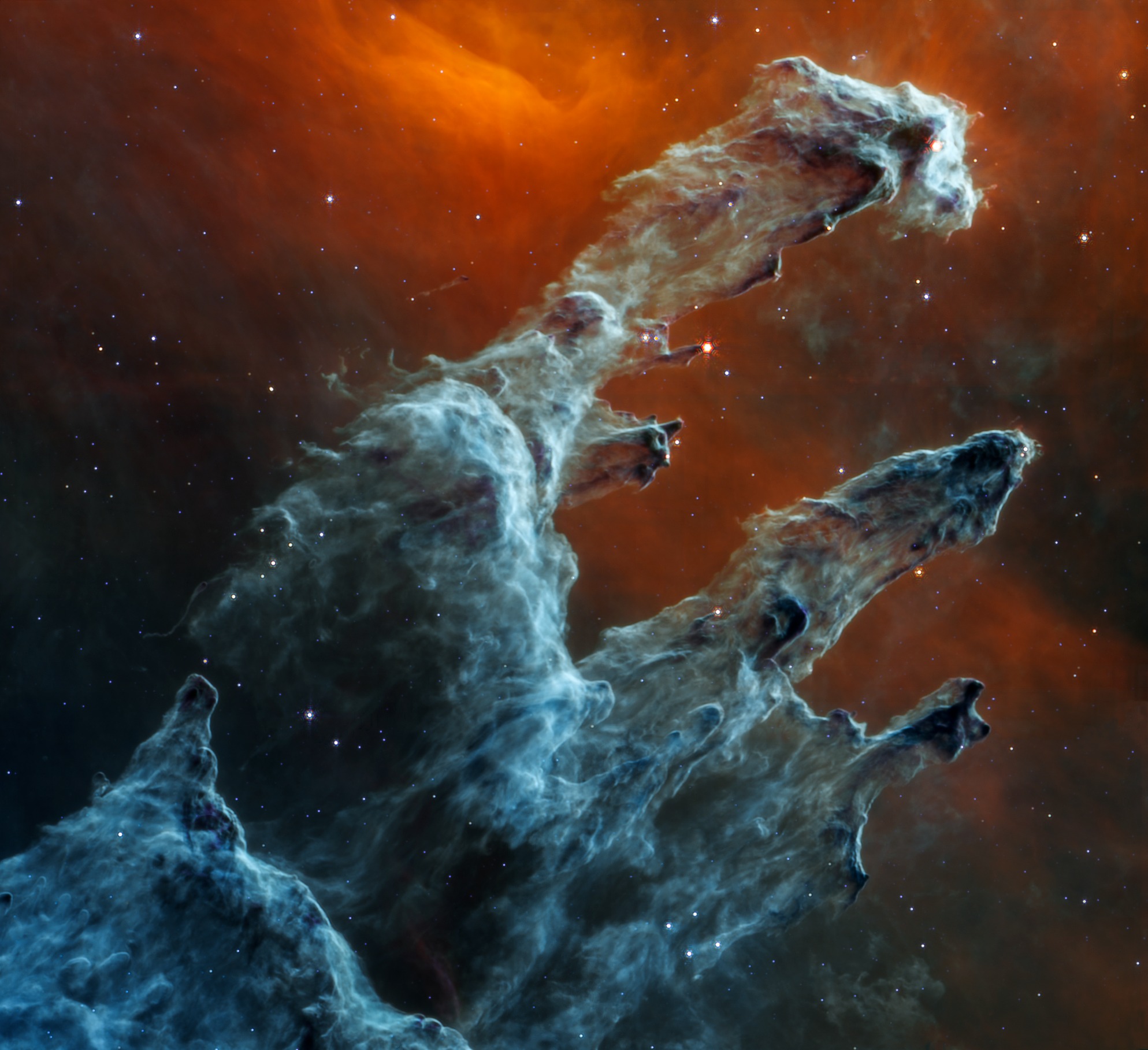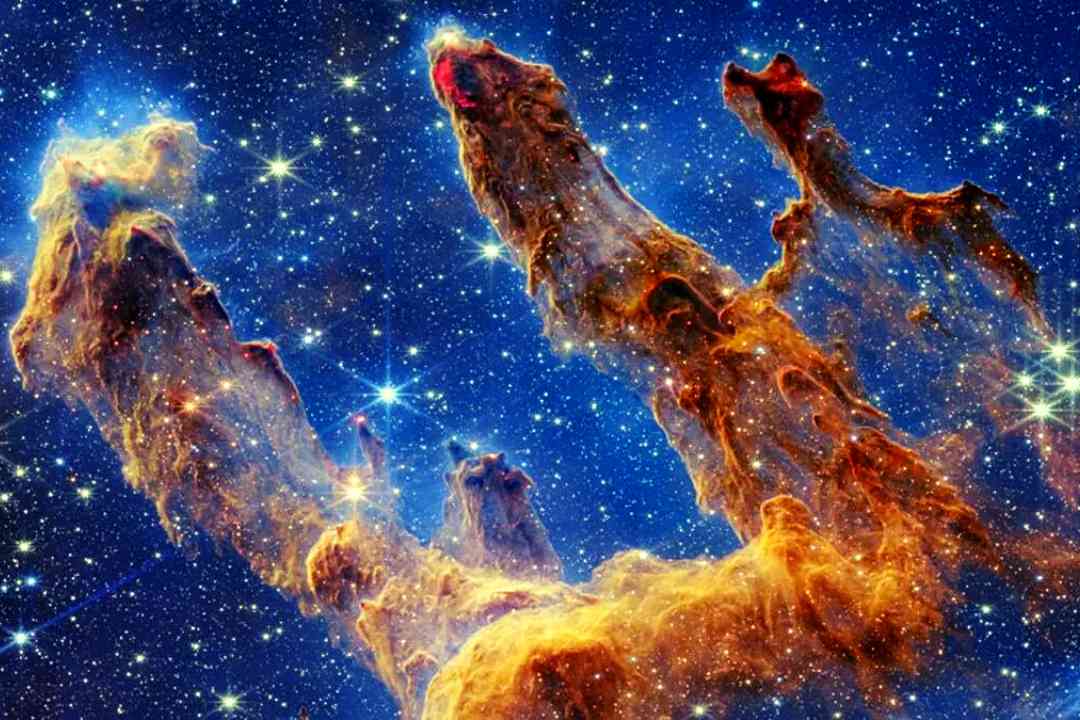NASA on Friday revealed the images caught on the telescope of James Webb which are dubbed as ‘Pillars of Creation.’ Explaining the images NASA said that it is not an ethereal landscape of forgotten time bombs. Nor are they images of soot-tinged fingers reaching out. The pillars flush with gas and dust, enshroud the stars that are slowly forming over many millennia. James Webb's telescope has captured these dusty views of pillars in infrared light and has given a new view of familiar landscapes and perspectives.
These so-called ‘Pillars of Creation’ are supposed to be cool, dense clouds of hydrogen gas and dust in the Serpens constellation and are 6,500 light years from Earth. The pillars lie at the heart of what astronauts refer to as Messier 16 (M16) or the Eagle Nebula- The active star-forming region.


Webb’s infrared detectors are able to see much of the light scattering effects of the pillars' dust to examine the activity of the newborn suns. While answering questions about Webb’s Mid Infrared light telescope setting a cold chill vibe through the images. the research organisation said that the interstellar dust cloaks the scene. And while infrared light specialises where the dust is, the stars aren’t that bright enough at these wavelengths. Instead, the looming, ‘leaden-hued’ pillars of gas and dust hint at the activity within.
The M16’s pillars are being illuminated and sculpted by the ultraviolet rays from the massive stars nearby. The radiation is also dismantling the towers. And if you could magically transport yourself to the location the pillars would be no longer there. We are only seeing them since we are looking at the past. The light that Webb detects has taken 6,500 years to reach its mirrors.
James Webb is a collaborative project of the US, European and Canadian space agencies. It was launched in December last year and has been regarded as the successor to the Hubble Space Telescope.
© Vygr Media Private Limited 2022. All Rights Reserved.
























